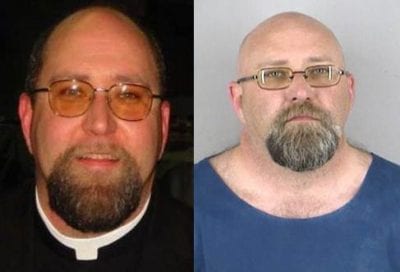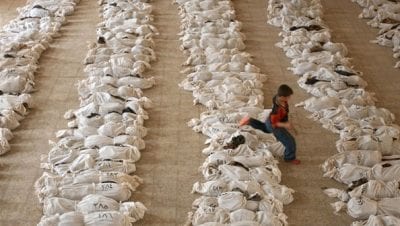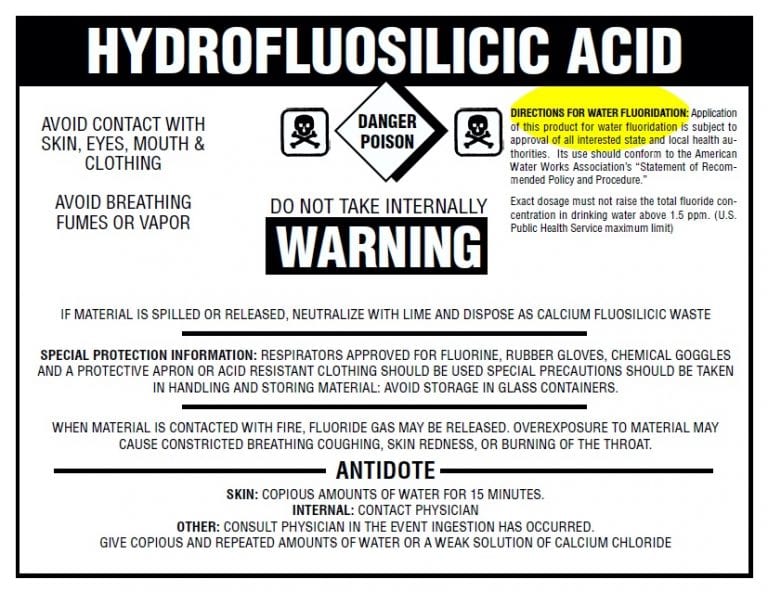 On the surface, the Rev. Shawn Ratigan was just the kind of dynamic new priest that any Roman Catholic bishop would have been happy to put in a parish. He rode a motorcycle, organized summer mission trips to Guatemala and joined Bishop Robert W. Finn and dozens of students on a bus trek to Washington for the “March for Life,” a big annual anti-abortion rally.
On the surface, the Rev. Shawn Ratigan was just the kind of dynamic new priest that any Roman Catholic bishop would have been happy to put in a parish. He rode a motorcycle, organized summer mission trips to Guatemala and joined Bishop Robert W. Finn and dozens of students on a bus trek to Washington for the “March for Life,” a big annual anti-abortion rally.
But in December 2010, Bishop Finn got some disturbing news: Father Ratigan had just tried to commit suicide by running his motorcycle in a closed garage. The day before, a computer technician had discovered sexually explicit photographs of young girls on Father Ratigan’s laptop, including one of a toddler with her diaper pulled away to expose her genitals.
The decisions that Bishop Finn and his second-in-command in the Diocese of Kansas City-St. Joseph, Msgr. Robert Murphy, made about Father Ratigan over the next five months ultimately led to the conviction of the bishop in circuit court on one misdemeanor count of failing to report suspected child abuse. It was the first time a Catholic bishop in the United States had been held accountable in criminal court in the nearly three decades since the priest sexual abuse scandals first came to light.
Both Bishop Finn and Monsignor Murphy, as ministers, were required by law to report suspected child abuse to the civil authorities. But they were also required to report under policies that the American bishops put in place 10 years ago at the height of the scandal — policies that now hold the force of canon law.
This is an account of how, as recently as 2011, in violation of both church and civil laws, a bishop and church officials failed to stop a priest from pursuing his obsession with taking pornographic photographs of young girls. Eventually it was Monsignor Murphy, not Bishop Finn, who turned in Father Ratigan.
The witnesses never told their stories in court. The verdict was decided by a judge in a bench trial that lasted less than an hour and a half. But the facts of the case are known and even agreed upon by both the prosecution and the defense — summed up in a nine-page stipulation of testimony that contained details about the case that were not public until they were submitted to the judge on Thursday. Many details were also revealed in what is known as the Graves report, an independent investigation commissioned by the diocese last year and conducted by a former United States attorney, Todd P. Graves.
“I truly regret, “ Bishop Finn said in court on Thursday, “and am sorry for the hurt that these events have caused.”
The bishop had advance warning about Father Ratigan, well before pornography was discovered on the priest’s laptop. Julie Hess, the principal of the parochial school, next door to St. Patrick Parish where Father Ratigan served, had sent a memorandum in May of 2010 to the diocese, which said:
“Parents, staff members, and parishioners are discussing his actions and whether or not he may be a child molester. They have researched pedophilia on the Internet and took in sample articles with examples of how Father Shawn’s actions fit the profile of a child predator.”
Children in the diocese’s schools are taught about appropriate boundaries between adults and children in an abuse-prevention education program called Circle of Grace. Ms. Hess said that while she was inclined to believe that Father Ratigan’s behavior amounted to nothing more than “boundary violations,” other adults were alarmed about specific events: Father Ratigan had put a girl on his lap on a bus trip, attempted to “friend” an eighth grader on Facebook, and had an inappropriate “peer to peer” relationship with a fifth-grade girl. On a children’s group excursion to Father Ratigan’s house, parents spotted hand towels shaped to look like dolls’ clothes, and a pair of girls’ panties in a planter in his yard.
The bishop told Father Ratigan in June 2010 that “we have to take this seriously.” But the testimony showed that the bishop, too, perceived the concerns simply as “boundary issues.”
Nine days before Christmas, Father Ratigan took his sluggish laptop to Ken Kes, a computer technician on contract with St. Patrick Parish, for repairs. Mr. Kes was startled to find photographs of young girls’ torsos and crotches. When he saw the one of the naked toddler, he took the laptop to the parish’s deacon. Mr. Kes is described in the testimony as “being so upset that his hands were shaking to the point he couldn’t open the laptop.”
The deacon immediately took the laptop to Monsignor Murphy at the chancery offices. He gave it to Julie Creech, a technology staff member at the diocese. Ms. Creech found “hundreds of photographs,” according to the testimony, many taken on playgrounds, under tables or in one case, while a girl was sleeping. Many pictures did not show faces — only close-ups of crotches. Ms. Creech wrote a report for her superiors noting that only four or five of the hundreds of pictures appeared to have been downloaded from the Internet: “the rest appeared to have been taken with a personal camera.”
Nevertheless, even before getting the laptop, Monsignor Murphy had already consulted with a Kansas City Police Department captain who served on the diocese’s Independent Review Board. The Graves report said that the captain, Rick Smith, recalled being told by Monsignor Murphy that the diocese had found only one nude photograph, that it was of a member of Father Ratigan’s family, and that it was not a sexual pose. Monsignor Murphy said he did not remember telling the captain those things. Their recollections also differed on what the captain had said about whether the photograph constituted pornography.
The next day, Dec. 17, 2010, Father Ratigan attempted suicide. He left messages apologizing to his family for “the harm caused to the children or you.” When he survived, he was sent first to a hospital, and then to Dr. Rick Fitzgibbons, a psychiatrist in Pennsylvania selected by Bishop Finn. The bishop testified that he was told by the psychiatrist that Father Ratigan was not a risk to children, and had been falsely accused by the school principal.
During this period, two women on staff in diocesan headquarters were urging their superiors to turn Father Ratigan in. Rebecca Summers, then the director of communications, told Monsignor Murphy to call the police, according to the testimony. And Julie Creech, the technology employee, said in a deposition in a related civil suit that she went to see Bishop Finn in his office to make sure he understood what she had seen on the laptop.
“I really got the feeling that maybe he didn’t understand,” Ms. Creech said in the deposition. “I don’t think he saw what I saw.”
The bishop assigned Father Ratigan to serve as a chaplain to the Franciscan Sisters of the Holy Eucharist, in Independence, Mo. He placed seven restrictions on the priest, including not using computers and avoiding all contact with children. But the bishop allowed him, on a “trial” basis, to celebrate Mass for youth groups at the prayer center that the sisters ran.
Over the next five months, Father Ratigan, who is now 46 attended a sixth-grader’s birthday party, co-celebrated a child’s confirmation, communicated with children on his Facebook page, hosted an Easter egg hunt and attended a parade, the testimony recounts. Invited to dinner at the home of parishioners, he was caught taking photographs, under the table, up their daughter’s skirt, according to a federal indictment of Father Ratigan.
Neither the bishop nor any church official told church members or Father Ratigan’s large extended family — which includes many children — that the priest had been ordered to stay away from children, Darron Blankenship, a brother-in-law of Father Ratigan and a police officer who has handled child abuse cases, said in an interview on Friday.
“For somebody that was under restrictions, he had free rein,” Officer Blankenship said. “He just went and did what he wanted.”
Some family members had heard that Father Ratigan’s laptop had contained pornography, Officer Blankenship said, but they assumed it was adult pornography taken off the Internet — upsetting but not surprising, they thought, for a man who had become a priest and had to adjust to celibacy later in life.
Bishop Finn and Monsignor Murphy learned about some of Father Ratigan’s violations of his restrictions. “I will have to tell him,” Bishop Finn wrote in an e-mail to the psychiatrist, “that he must not attend these children’s gatherings, even if there are parents present. I had been very clear about this with him already.”
The testimony filed in court on Thursday says that because the bishop trusted Father Ratigan to respect the restrictions, he was never monitored and the community was never informed.
Ratigan was sent to Philadelphia Jan. 6-11, 2011, to be evaluated by psychiatrist Richard Fitzgibbons, who was involved with the priest support organization, Opus Bono Sacerdotii. Fitzgibbons determined that Ratigan wasn’t a pedophile-he was just lonely. Fitzgibbons had previously publicly criticized the bishops’ “zero-tolerance” policy regarding priests accused of child sexual abuse.
“Fitzgibbon’s close affiliation with a controversial advocacy organization for child molesting clerics makes it hard, if not impossible, for him to be objective in evaluating an accused sex offender priest,” said Barbara Dorris of St. Louis, SNAP’s outreach director. SNAP says it’s “bizarre” that Fitzgibbons claims Ratigan is “depressed” and “lonely” and that’s what caused him to take hundreds of pictures of little girls’ crotches. The group is also critical of Fitzgibbons for reportedly backing Ratigan’s claims that a principal was “out to get him.”
“What kind of therapist diagnoses an adult as “lonely” because he takes pictures of little girls’ underwear and private parts for years?” asked Mike Hunter, SNAP’s Kansas City director “What kind of therapist blames a parochial school principal for that child predator’s problems? And what kind of bishop seeks out this therapist?”
“Finn clearly didn’t want an honest assessment of Fr. Ratigan’s sickness. He wanted legal and public relations ‘cover’ so he could put Fr. Ratigan around kids again,” Hunter asserts.“At an absolute bare minimum, Finn owes his flock – especially parents of Fr. Ratigan’s victims – an explanation of why he knowingly picked such an obviously biased and bizarre therapist for such a crucial assignment.”
“There are tens of thousands of competent, independent mental health professionals in this country. Finn chose none of them,” said Clohessy. “Instead, he deliberately picked a biased guy who would provide the ‘cover’ Finn sought so he could protect church assets while putting Fr. Ratigan back in ministry.”
“It’s what bishops have done for years – pay unqualified or unethical therapists who will call child predators anything except child predators so bishops can put them back in parishes,” said Hunter. “Then, in yet another cynical betrayal, bishops end up blaming those therapists for giving them ‘bad advice.’ And when the dust settles, and another allegation surfaces later against another cleric, bishops hired the same therapists again.”
Fitzgibbons is also tied to the Philadelphia archdiocese. He served, for years, on the “Counseling Committee of Psychiatrists and Psychologists for Religious of the Archdiocese of Philadelphia, which Dorris says “is perhaps the most discredited Catholic diocese in America on child sex abuse and cover ups.” A grand jury investigation earlier this year found that 37 accused pedophile priests were still on the job in the archdiocese.
SNAP calls Opus Bono “a radical group” and notes that Catholic bishop of Ft. Wayne Indiana said “I think it’s outrageous what they’re doing” and called their work “unauthorized.”
Ratigan lived in a private priests’ residence on the Sisters’ property after in-patient psychiatric treatment and a stay with his mother. Bishop Finn stated that he had ordered Ratigan to stay away from children, later to find out that Ratigan attended a St. Patrick’s Day parade and a child’s birthday party. The Sisters of the Holy Eucharist are said to have “often hosted young girls for retreats, dinners and other events”, and Ratigan often stayed with parishioners with young children on weekends. Parishioners said that the bishop allowed Ratigan to preside over a First Communion.
On May 11, 2011, while Bishop Finn was out of town, Monsignor Murphy again contacted Captain Smith at the Police Department and told him that the diocese had indeed found not one, but hundreds of photographs of little girls. A week later, Father Ratigan was arrested at the Sisters of St. Francis of the Holy Eucharist. He pleaded “not guilty” on May 23, 2011. He was indicted by a federal grand jury in Aug. 2011 on thirteen counts of possessing and producing child pornography. Prosecutors said he exploited five minor victims, ages 2 to 12. On August 2, 2012 Ratigan changed his plea to “guilty”. He was sentenced on September 12, 2013 to 50 years in prison.
Bishop Finn and the diocese were indicted by a grand jury in October 2011. Monsignor Murphy was given immunity for cooperating with the prosecution. He testified that he turned Father Ratigan in because he had grown concerned that he was truly a pedophile. The monsignor said that when the bishop learned he had turned in Father Ratigan, “It seemed he was angry.”
After Father Ratigan was arrested, Bishop Finn met with his priests. Asked why Father Ratigan was not removed earlier, the bishop replied, according to the testimony, that he had wanted “to save Father Ratigan’s priesthood” and that he had understood that Father Ratigan’s problem was “only pornography.”
Sources:



